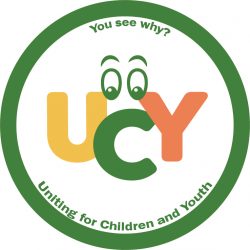by Richard Fransham

The setting is Lester B. Pearson High School in east Ottawa. It’s the 1990s, I’m a teacher, and Scott is a student in my grade 11 computer class.
Inclusion was important back then, and it’s important now. The remarkable thing is that in the 25 years or so since Scott was in my class, schools have shown little sign of getting better at how to deal with diversity and deliver equity. The problem is the school structure. It makes inclusion, which is all about equity, at best a forced fit.
You see, Scott couldn’t do what the so-called “normal” students in the class could do. He had Down Syndrome, but inclusion meant having him do what the other students did even though he couldn’t do it. From a teacher perspective, it greatly increased my workload because I had to plan something for him and something different for the other students, and it made him stand out as unable to do what other students were doing. Compassion is not the problem here. The problem is unreasonable expectations. It comes down to too little time and too rigid a system for teachers to give all students what they need.
Some people will argue that I simply didn’t know how to make a success of the situation, and I would agree that with what I know now I could have done better, but around the same time I had another experience that cast things in a different light. I had the opportunity to work with twenty-five students who were freed from formal scheduling for a semester. The students were mixed-age from grades 10 to 12 and represented a cross-section of the larger school population. They stayed together all day working under self-direction to obtain credits in four mandated courses. I acted as a facilitator emphasizing the skills required for independent, lifelong learning, and I actively cultivated a caring learning community where everyone was a teacher and a learner. In that environment, Scott would have thrived. The story of Danh helps to explain how this could be so.
Danh had recently immigrated from Vietnam. He was a student in my grade 9 science class, and he was miserable. It was a large class of over 30 students and integration policies at the time meant it included the full range of low performing to high performing students. It was a rowdy mix that left me feeling happy to survive it each day, and Danh appeared to enjoy it even less. He never smiled, never wanted to talk to anyone, in lab groups he stood at a distance behind the others wanting to disassociate himself as much as possible. He was one unhappy kid who wanted to be anywhere other than in that class.
To my surprise, given the experience he had under my watch, Danh enrolled in the program where students were free of the bells, and he accentuated as much as anyone could that the greatest benefit to eliminating formal scheduling is in what it does for relationships. The friendlier, less tense and less competitive learning environment resulted in Danh quickly making friends. Within a couple of weeks his scowl had given way to a charming, bright smile, and his English improve dramatically as he happily jabbered with his friends. It was compelling evidence that changing the learning environment can change a kid.
In November, less than three months into the program, Danh came to me asking if he could plan the class Christmas party. I asked him to check with the other students to see what they thought and in no time he was back telling me they liked the idea. Thus it was that he went from being self-exiled among his peers to being their social planner.
It turned out that we went to his uncle’s Vietnamese restaurant to celebrate the season. I rode with the class on public transit to the restaurant where Danh met us as the maître d’. Beaming, he graciously showed us to our tables asking us how the bus ride was and describing non-alcoholic drinks that had been specially planned for us as we settled.
The contrast between the Danh of a few months earlier and the Danh of that moment remains vivid for me as an example of what school does and can do for students. In addition, Danh’s story serves as an example of how to integrate, as opposed to assimilate immigrant students. In the program, Danh was the perfect ambassador for his people, loving and gracious he shared his culture with the rest of us. He had these gifts to share, and even more, the connection to the family restaurant gave us a lesson in what it is to be entrepreneurial.
Before returning to Scott, there is another story that will help to establish the natural place for him in that program that eliminated formal scheduling. It involves two grade twelve boys who came to me about six weeks into the program to make a confession. It was motivated by their sense that they had been transformed into better human beings. They told me they had signed up for the program because they just wanted to work together all day on computers, and that they intended to have nothing to do with the “little grade ten kids.” After confessing this, they added, “We don’t even notice the age difference now.” It speaks to the value of providing learning environments where students can actually get to know each other. The thing that brought the boys around to a kinder view of others was the gifts they brought to the learning environment. Their enthusiasm and knowledge of computers meant that they often had a gathering of admiring students peering over their shoulders at the magic they were producing on the screen. It worked to make friendships and friends don’t care about age.
It is also the gifts Scott has to offer that help to define how the program would work for him, and his special gifts were never more evident than the night of a high school dance. At the time, the boys and the girls lined up on opposite sides of the gym with the “normal” boys afraid to walk across the floor to ask a girl to dance, but not Scott. As soon as the first tune began he went to the head of the girls line and asked for a dance – and he got one. The tune ended and the dancers went back to line up in their same positions. The next tune began and Scott went again to the head of the girls’ line and asked the same girl to dance. She declined and without flinching he went to the next girl in line and asked her to dance, and she accepted. This went on for about ten songs with Scott returning to the head of the girls line and quickly working his way down it until a girl accepted his offer. It was a beautiful scene that said volumes about qualities we want to see in kids. His ability to act without discrimination, and without being hamstrung by feeling of rejection, resulted in him dancing the night away without anxiety while his nervous counterparts, afraid to take a risk, failed to take advantage of opportunity.
To have the likes of Scott in a learning program like the one that eliminated the bells would be fabulous for all of the other students. His positive, confident and loving disposition are gifts that cannot be surpassed.
Imagine the following. A group of grade 11 students in the program were studying Shakespeare. They decided to integrate their English, art and computer courses with the production of a Shakespearean play. They would create a set, learn their lines and act it out, and create a video edited on the computer. Scott would be in heaven helping with the art, acting out a role, and participating in the video production, and while he was doing that, he would be bringing out the best in his classmates by showing them the fun in being uninhibited.
If you think like me, then the stories above will have you asking, “Why are we not breaking out of the confining old practice of formally scheduling the school day.” We can provide learning environments that allow people to be real, to stay in touch with their humanity, to form caring relationships, and to learn what most matters. There appears to be no obvious answer as to why we are not doing so. It leaves one wondering if it is the result of “normal” people lined up on their walls afraid to take a risk. We have a choice. We can read this article 25 years from now and think how far we have come or how little has changed. Taking a lesson from Scott, it’s time to take a risk.

